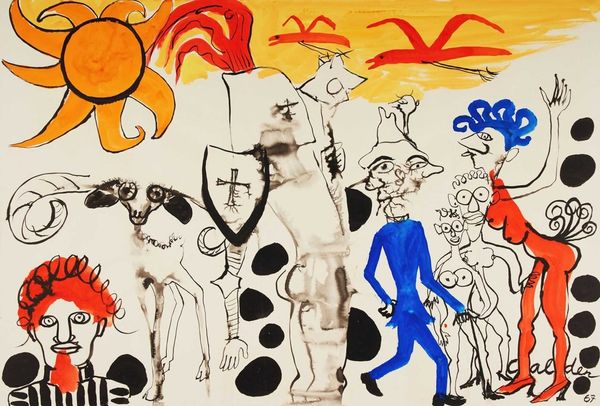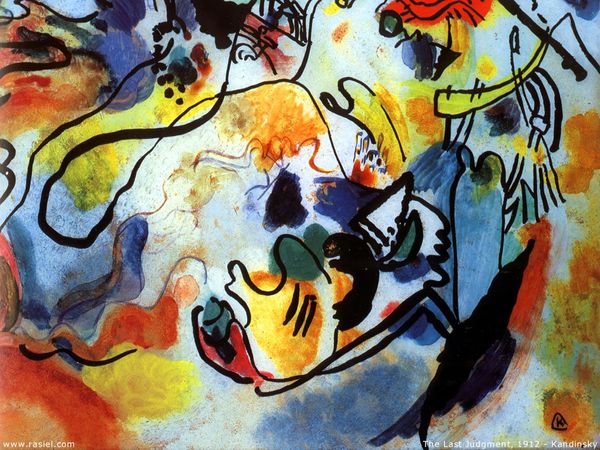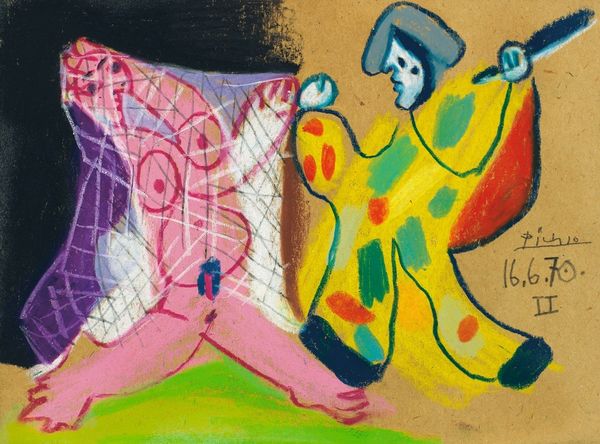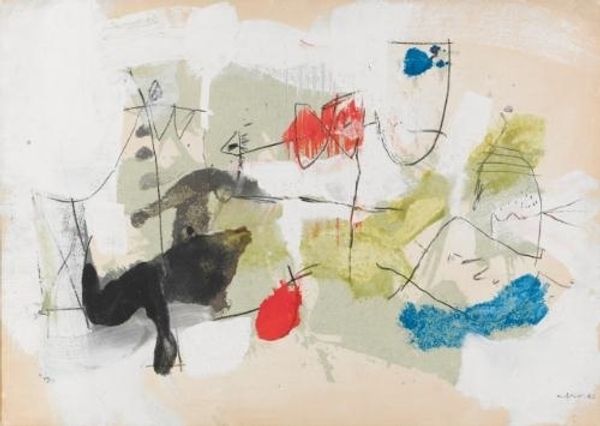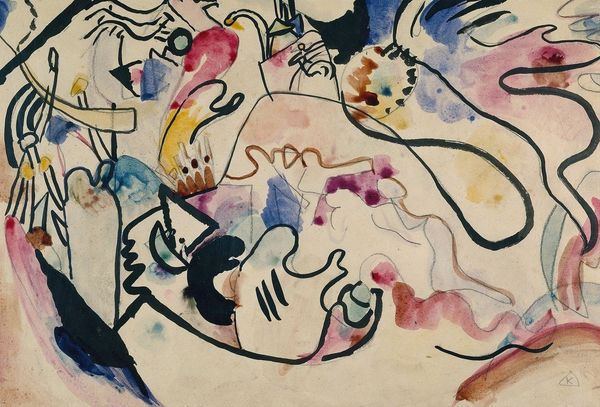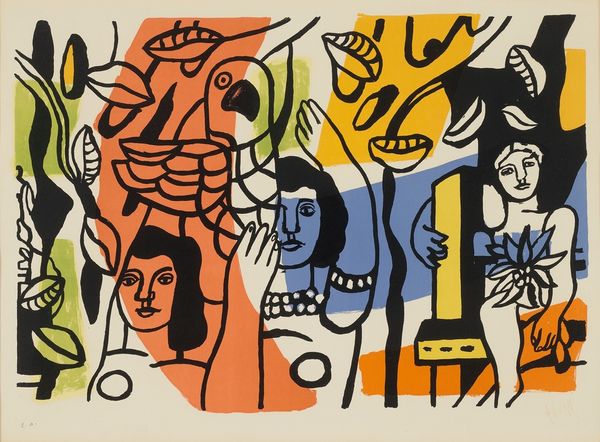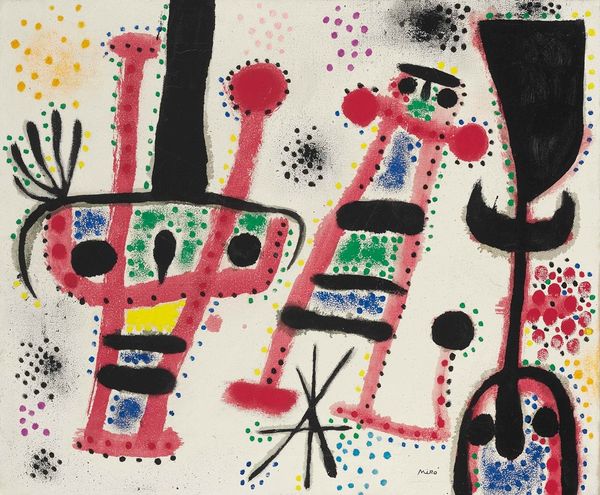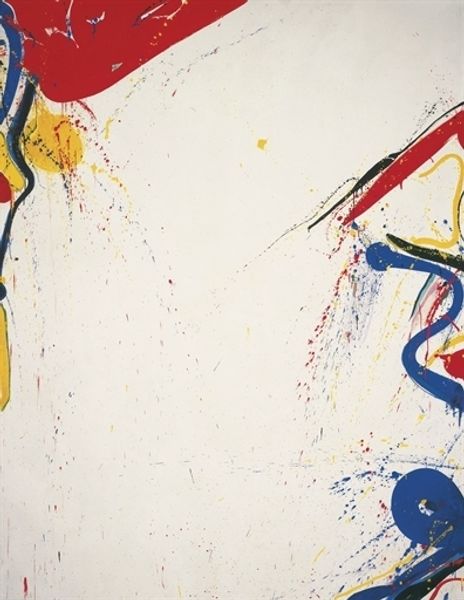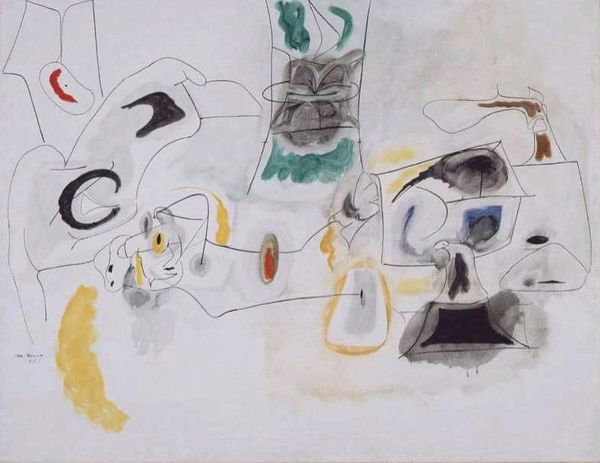
Copyright: Modern Artists: Artvee
Curator: Welcome. Today, we're exploring Joan Miró's "Groupe De Personnages" from 1938, a painting rendered primarily in watercolor. What strikes you first about it? Editor: An almost primal exuberance. Despite the constraints of the medium, Miró achieves a sense of uninhibited joy, wouldn't you agree? The whimsical forms practically dance across the canvas. Curator: Interesting. What I immediately see is how Miró created this work at a crucial moment. This was right before the Spanish Civil War fully engulfed the country. The watercolors suggest resource limitations, an urgency in production dictated by impending political turmoil, wouldn't you say? Editor: Perhaps, but notice the sheer delight in the biomorphic shapes! The colours create their own world of associations, independent from direct, real-world references. The painting creates its own structural logic and doesn't allude to what you may see with a landscape, history painting or even still life. Curator: But consider the context! Miró was deeply affected by the rise of Fascism. "Groupe De Personnages" needs to be seen as a reaction. His turn toward a more 'primitive' style reflects a broader artistic move toward challenging traditional values. Editor: I can agree to that. I understand it, however I am more inclined to be attracted to his aesthetic arrangement, to understand its appeal beyond his moment of making it. Miró seems far more occupied by surface level qualities - even his 'figures' read less as social commentary and more as compositional strategy. They work formally to move your eye, create contrast. Curator: Fair enough, but the seeming "simplicity" belies the intensity of the historical situation. This wasn't just about aesthetic choices; it was about engaging with a world on the brink. How artists at this moment began employing novel techniques, especially in distribution as posters or inexpensive prints, so they could respond rapidly to emerging threats. Editor: I concede that appreciating the historical backdrop undeniably adds a layer of richness to the piece, although there are layers there before such historical interpretation. Overall, an incredible piece that continues to stir interesting questions about aesthetics and context. Curator: Absolutely, a perfect example of art reflecting and refracting its historical moment, inviting continued critical engagement.
Comments
No comments
Be the first to comment and join the conversation on the ultimate creative platform.

